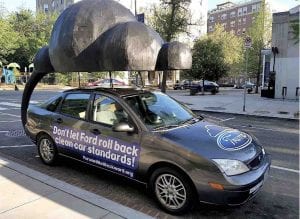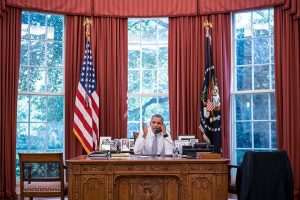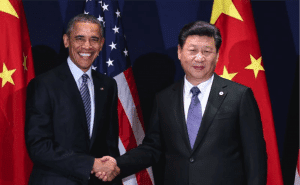
Everything that is happening in the solar industry is happening in Nevada right now.
On the one hand, President Obama announced a slew of new incentives and financing mechanisms for renewable energy and efficiency Monday at the 8th annual Clean Energy Summit in Las Vegas, hosted by solar champion Sen. Harry Reid (D-NV).
But he also seemed to be taking the local utility to task during the speech. On Wednesday, Nevada’s public utility commission (PUC) will decide whether to agree with a proposal by the local utility and implement huge rate increases in solar customers that industry insiders say will completely devastate the residential market in the state.
“We see the trend lines. We see where technology is taking us. We see where consumers want to go,” Obama said Monday. “That, let’s be honest, has some fossil fuel interests pretty nervous, to the point where they are trying to fight renewable energy.”
Nevada is — so far — a solar success story. The state is in first place in per capita solar jobs. Investment in solar quadrupled last year to more than half a billion dollars. There are more than 100 solar companies in Nevada, including six manufacturers. And the only reason solar customers’ electricity rates are even up for debate is that the installation cap under the old rate was hit last week, six months earlier than the utility estimated.
Under an agreement hammered out earlier this year, public utility NV Energy’s net metering program — under which solar customers are paid market rate for the electricity they put back onto the grid — would be reconsidered by the end of the year, sometime before the 235-megawatt (MW) cap was hit. Now, solar installers are in limbo. The PUC could accept NV Energy’s proposal that would add fees and charges to solar customers’ bills.
“This proposal is a thousand pages. It’s incredibly complicated,” Chandler Sherman, a spokesperson for SolarCity, told Think Progress.
Sherman said the proposal includes nine new fees, taxes, and charges, which are often difficult for residential customers to understand. “They are really just designed to make it harder for people to go solar,” she said.
Among the additions is a nearly $14 per kilowatt hour (kWh) demand charge. That means that a customer’s peak demand during the month would be multiplied by $14 and added to the electricity bill, which currently just calculates a customer’s usage. The surcharge would only apply to solar customers. These types of charges are difficult to estimate and are incredibly rare for residential customers in the United States.
“If your teenage kid plugs his guitar into the garage, you’re screwed,” Will Craven, a spokesperson for the Alliance for Solar Choice, a rooftop solar industry advocacy group, told ThinkProgress.
Craven, who is also a spokesperson for SolarCity, would know. He was active in the fight against Salt River Project’s proposal to hit solar customers in Arizona with fees. That proposal, which passed last year, gutted the solar industry in SRP’s service area.
After the charges went through, SolarCity relocated 85 employees out of Arizona, as residential applications for solar fell 96 percent. “A lot of the state’s domestic companies were not able to survive,” Craven said. “You are not able to go solar in SRP’s territory anymore.”
If this happens in NV Energy’s territory, it will be a critical blow to Nevada’s solar industry. NV Energy serves 85 percent of Nevada’s population, 2.4 million customers.
On Monday night, Obama was bullish on solar. “It’s an American energy revolution,” Obama told the audience at the Clean Energy Summit.
He took the opportunity to announce a new financing option for residential solar — property assessed clean energy (PACE). PACE allows homeowners to borrow money for renewable energy investments and pay the loan off as a property tax. The solar industry has been working towards PACE for years, so this is good news for them. In addition, Obama announced another $1 billion in loan guarantees and a private-public partnership that will put solar power on more than 40 military bases across the country.
Sara Birmingham from the Solar Energy Industry Association (SEIA) applauded the president’s announcements, but cautioned that federal policies will only go so far without on the ground reinforcement.
“Anytime there is additional financing open to people who want to go solar, that is a great thing,” Birmingham told ThinkProgress. “But unless we have these underlying policies like net metering backing it up, it may be difficult to translate that into installations.”
For his part, Obama seemed to realize that the real solar fight is on the ground. NV Energy and its upcoming policy change was the “gorilla in the room” at the Clean Energy Summit, Craven said, and during his keynote address, Obama seemed to be speaking between the lines.
Utilities “are trying to undermine competition in the marketplace,” he said. “They are trying to fight renewable energy.”
The president did not mention NV Energy by name — instead calling out several utilities around the country that have put pro-solar policies in place and are working to figure out how to transition the electricity industry from a simple provider to an integrated system of distribution. But he did issue a tacit warning to utilities that don’t get on board.
“America always comes down on the side of the future,” he said.
Source: Climate Progress. Reproduced with permission.










